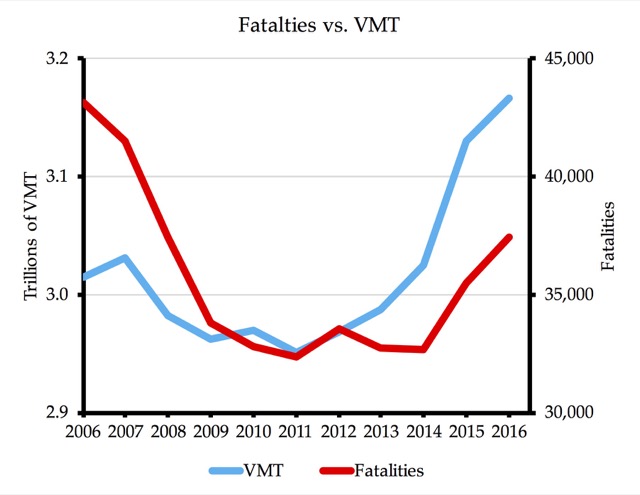According to the Washingtonian, a transit advocacy group called TransitCenter “analyzed” the data and found that declining ridership on the Washington Metro system is “dragging down national ridership figures.” With the Metro’s numbers, the national total of heavy-rail riders is declining; without Metro, heavy-rail plus light-rail ridership is increasing. In other words, just give Metro $15 billion or so to restore its system and ridership will recover, both in DC and nationally.
I haven’t been able to find TransitCenter’s analysis, but I didn’t tried very hard because it is clearly out of date. TransitCenter used the National Transit Database to compare data for 2015 and 2016. But the database uses data from each agency’s fiscal year, and for most transit agencies, fiscal year 2016 ended more than a year ago. As the Antiplanner noted last week, the Federal Transit Administration has published ridership data through August, 2017, and it shows ridership declining in all major categories and in almost all major transit agencies and urban areas.
If that’s not enough, the American Public Transportation Association just published its second quarter ridership numbers. APTA collects its data separately from the FTA, though it later corrects its numbers if there are major discrepancies or gaps in its data that can be filled by the FTA numbers. In any case, the second quarter numbers confirm that, when compared with the second quarter of 2016, ridership declined for both light rail (which, in APTA’s world, includes streetcars) and heavy rail, as well as commuter rail, buses, and trolley buses. The only categories that did not decline were demand response (paratransit) and “other,” which includes people movers, monorail, ferries, cable cars, and van pools.








